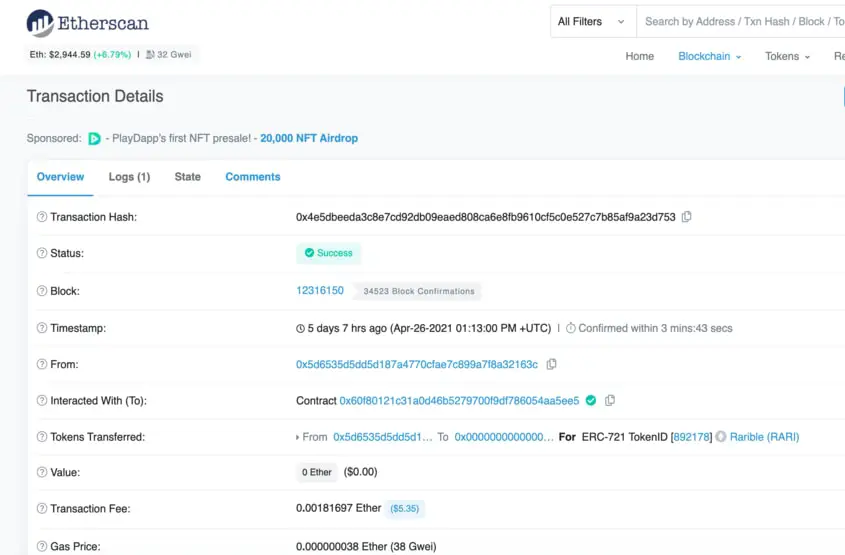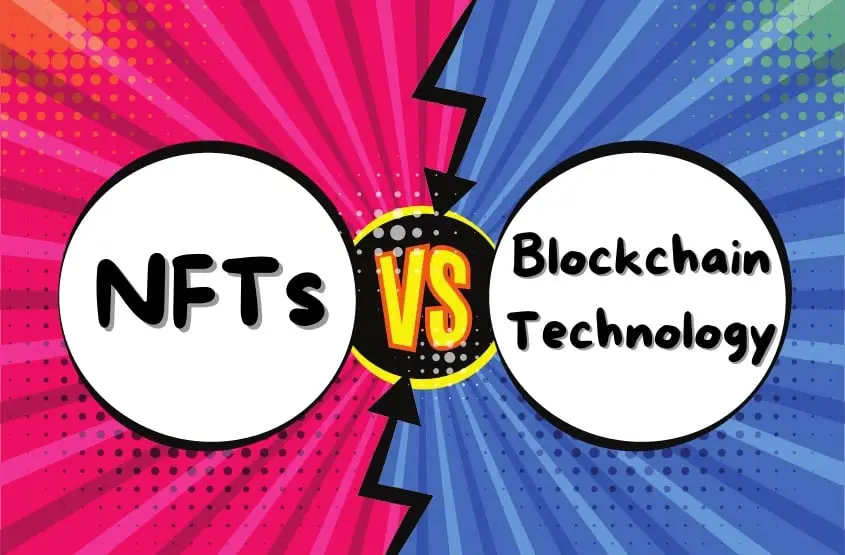Popularity of NFTs are increasing everyday and new uses for these digital tokens are still being identified. As I was thinking of new ways to add value to NFTs I thought to myself — why are non-fungible tokens so difficult to wrap your mind around? Perhaps it’s the database in which NFTs actually operate on. So, what do NFTs operate on?
NFTs operate on a decentralized digital ledger known as the blockchain. The blockchain gathers information such as transactions into groups known as blocks which then hold the information. Once the block’s capacities are filled, the block is then chained to the previously completed block forming a blockchain.
Let’s dive deeper into understanding Blockchain Technology.
The Blockchain is a series of records or blocks that are linked to each other (like a chain) using cryptography, hence the name “Blockchain”. The uniqueness of these blocks lies in the fact that they contain a connection to the previous block — a timestamp and all the transaction data coded into it. The blockchain once created, cannot be changed without altering all the previous and subsequent blocks making it extremely secure.
It is also the latest distributed ledger technology. A distributed ledger is a sales ledger that is entirely virtual. It is managed by a network of peer-to-peer computers that are supporting the blockchain and backing up the records consistently. Blockchains can be considered secure because the records are backed up on multiple systems which will keep track of any changes and hence any errors will be quickly identified.
The first Blockchain was invented by Satoshi Nakamoto in 2008 to perform the functions of a public transaction lecture for the cryptocurrency Bitcoin. It is not clear whether Satoshi Nakamoto is a person or group of people and remains a mystery to this day.
The Blockchain is used to authenticate transactions and avoid the issue of double-spending that comes with virtual systems. This system also allows trustworthy, reliable record-keeping without the need for a centralized server or monitoring from any government.
Okay, let’s look at some key features of a Blockchain.
There are three main features which make the blockchain a solid database for NFTs:
- Transparency
- Decentralization
- Permissionless Access
I’ll take your through each one of these main features so you gain a better understanding.
Transparency
A blockchain is publicly recorded data and its transactions and ownership records can be accessed by anyone with a cryptowallet. There are no permissions needed, and though open and permissionless, the Blockchain is near un-hackable.
Decentralization
When you have a lot of data it is imperative that the data be held centrally to ensure its authenticity and validity. The blockchain method of storing data across its peer-to-peer networks eliminates the risks that come with the decentralization of data. The data stored on a blockchain is generally seen as incorruptible. Hence blockchains do not need governments or private companies to run them and can run completely as a decentralized system.
Permissionless
Blockchains don’t need any permissions and no access control is required to access or to check data on on the ledger. This is exceptionally beneficial for NFTs, as anyone can check the ownership and transaction data on any non-fungible token that has been issued up to the latest transactions. They can also be sure that what they’re buying is the original work as it can be traced back to its creator.
The current NFT craze has brought into the limelight the functionality of a blockchain. NFTs are not limited to intangible items and can actually be applied to real-life assets such as sports cards, land, certificates, etc. New uses for NFTs continue to crop up and will continue as technology advances into the future.
Because of the scarcity and high demand for certain NFTs, some digital tokens are providing extreme value and opportunity for personal and business use alike. Moreover, NFTs are a great way for direct to consumer relationships to be further developed and more trust formed between two parties.
Why Are NFTs On The Blockchain?

NFTs are created on the Blockchain to take advantage of the non-fungibility, security, accessibility, and simplified transactions that the Blockchain offers. Ultimately, this creates a frictionless transaction between two separate parties.
NFTs are coded into blockchain-based smart contracts which are partially or fully executed and enforced without any human interaction or interference. This is another reason that NFTs on the blockchain. Imagine that you are an artist and you have included the terms of royalty into the smart contract for every subsequent secondary sale.
Now any time your artwork gets sold in the secondary market you automatically get the royalty you specified in the terms automatically without having any middlemen as brokers. No follow-ups needed no reminders. It is enforced by the smart contract in the blockchain.
So, non-fungible tokens are a unit of data that is stored on the blockchain and the blockchain certifies this digital file to be true and unique. It’s basically a certificate of authenticity which is publicly visible to the world. It is also safe, secure and accessible at the same time. It’s Blockchain Technology that makes this all possible.
In the NFT market you’ll find artists, content creators, buyers, and collectors who are now crowding in as there is now an incredible opportunity for profit, trade and community building. Since NFTs are on blockchain technology, they provide artists and content creators with historical provenance.
Anyone can check the tokens and be assured of their authenticity. So forgery can be eliminated. Even if the replicas are made you can easily verify the authenticity of the work to reveal their origin. The digital ledger system allows many flexibilities such as royalty agreements, the exclusivity of ownership, and even issuing shares and selling ownerships to a particular non-fungible item.
The blockchain benefits the buyers too because even though they might not hold the copyright of the NFT, they do have the guarantee of authenticity that comes with owning it. So when they have to sell the NFT they don’t have to prove or establish their ownership or the authenticity of the work. This makes it simple to sell and trade NFTs.
NFTs vs Blockchain: Are They The Same?

So, are NFTs and the Blockchain considered the same thing? Not exactly.
NFTs are considered a digital asset providing proof of ownership which are minted on a decentralized digital ledger called the Blockchain. The Blockchain is a public ledger of transactions while the NFT is a digital asset recorded into the blocks ultimately forming a blockchain.
Non-fungible tokens are just one of the digital items supported by the blockchain, cryptocurrency was the original purpose for the creation of Blockchain Technology. Think of the Blockchain as a tree — where NFTs and Cryptocurrency are the fruits. Blockchains make NFTs possible and transactions simple.
In conclusion, NFTs are made possible because of Blockchain Technology. Blockchain being a virtual, decentralized, unalterable, and accessible ledger system allow NFTs to exist. NFTs have opened a whole new world of opportunities for various groups of people such as artists, creators, musicians, collectors and traders.
Thanks to blockchain technology, NFTs can now be safely transacted online and the creators of NFTs can be assured of their returns without depending on middlemen or private companies. NFT sales have exceeded 10 million and by March 2021 they have reached over 120 million dollars. Many argue that it is just a speculative fad and will fade away in some time. But the ground reality indications are to the contrary. It looks like NFTs are here to stay.
I believe what we see is just the tip of the iceberg and we have only barely scratched the surface of all the possibilities which lie ahead for NFTs and its database. With more people joining in, more uses for NFTs will be developed and soon both tangible and intangible assets will be tokenized.

6 thoughts on “NFT Database For Beginners: The Blockchain Explained.”
Comments are closed.